An Agile Approach to Strategic Planning
Many experts do not see a complete return to full-capacity campus soon, and the coronavirus pandemic exacerbated issues like government funding, student mental health, diversity, and inclusion, according to a new report by the Association of Public and Land-grant Universities.
In response to changing conditions, academic institutions are implementing actionable strategic plans to ensure quality education delivery. Instead of just building a 5-year strategic plan and measuring it every other year, agile institutions set short-term goals and actions to provide equitable and quality education.

Top 5 Higher Ed Trends to Watch In 2021
While we admittingly don’t have a crystal ball, we at Enflux have a solid pulse on Higher Ed. These are the Top 5 Higher Ed Trends to Watch in 2021, with some additional reading links. Enjoy, and we look forward to being part of your successful 2021.
Promoting Student Mental Health
As more students manifest signs of emotional and psychological distress, counseling will be more widely available and promoted more aggressively. Academic institutions will be taking a more comprehensive approach to creating healthier learning environments by enhancing the full spectrum of student life services and revising educational practices that influence communication and collaboration around these issues.
Hyflex Education: Large-Scale Remote, In-Person, and Hybrid Learning
Continued focus on technologies and strategies for digital transformation to support changing conditions and new teaching formats. For instance, academic institutions will continue to embrace teaching formats like HyFlex education to offer flexibility and deliver instruction to students with various learning styles. As EDUCAUSE notes, “The hybrid flexible, or HyFlex, course format is an instructional approach that combines face-to-face (F2F) and online learning.
Support from Diverse Organizations to Bridge Digital Education
During the transition to remote and hybrid learning models, access to technology has augmented existing educational inequalities and created a digital education divide.
This transition affected millions of students who lack access to a personal computer and reliable internet at home. Therefore several organizations are stepping up and helping bridge digital education by providing funds, computers, internet access, and many more things.
Remote Accreditation Visits
With in-person meetings, preparing a Self-Study takes about two years, but when everyone is working remotely, engagement may not be as high as usual and can delay the process. However, academic institutions are fighting the Out Of Sight, Out Of Mind effect with innovative approaches to:
– Remind people that self-study is still happening and is imminent
– Provide some final refreshers on essential items and findings in the self-study
Remote accreditation visits have proven to be efficient and effective. So the big question is, are we going back to on-site accreditation visits?